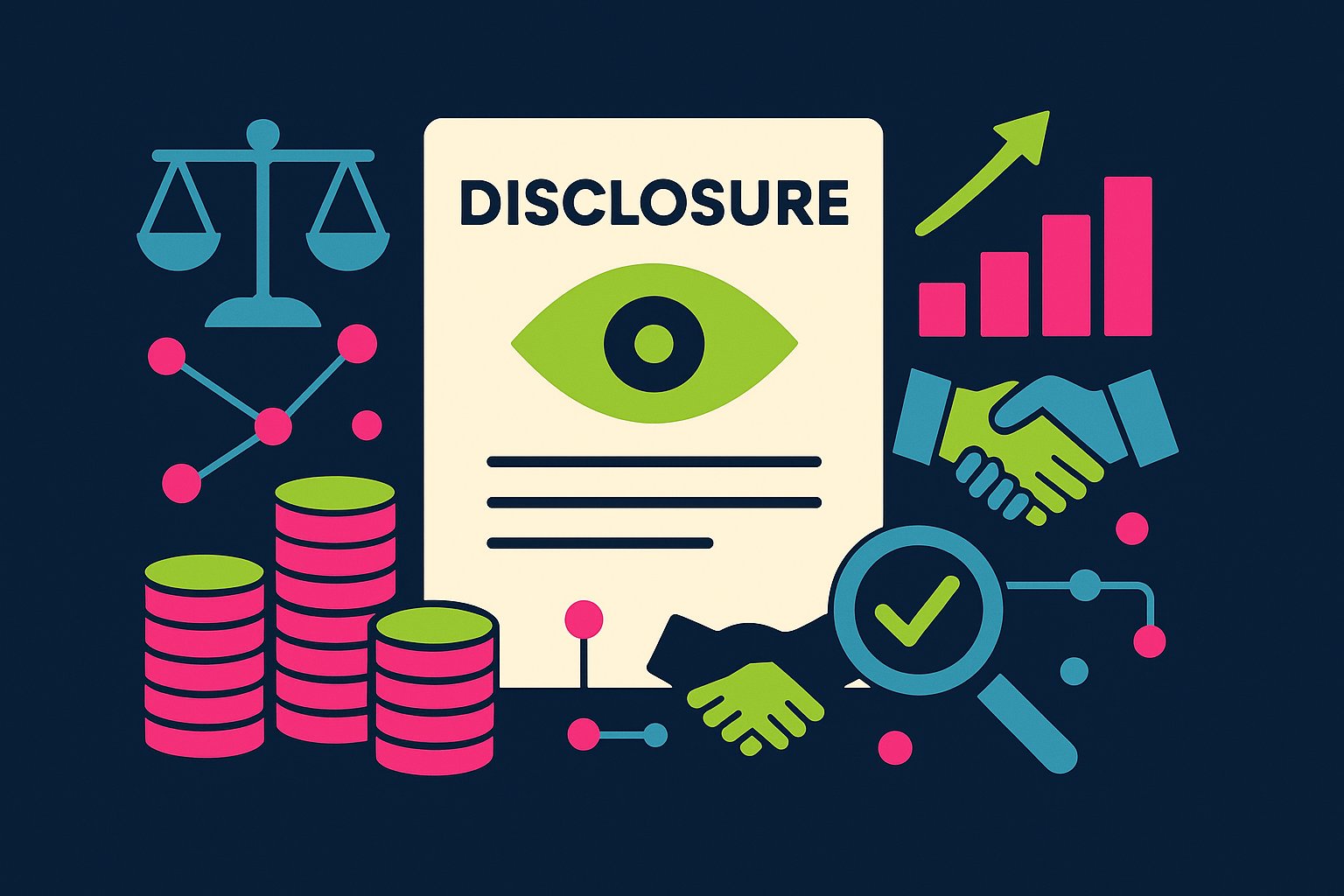Charting Your Course: Why License Terms Matter to Every Creator
In a marketplace teeming with innovation, creators stand at the crossroads of potential and protection. Intellectual property (IP) holds promise not only as a creative badge but also as a potent revenue engine. Yet without well-crafted license terms, even the most groundbreaking work can flounder in ambiguity, stifling income, cooperation, and future growth. This guide sheds light on essential license provisions every creator should know, empowering you to negotiate with confidence, safeguard your rights, and unlock sustainable value from your artistic, technical, or brand-driven endeavors.
Decoding License Types: Finding the Right Fit
Licenses come in myriad forms, each catering to different strategic aims. Exclusive licenses grant a single party the sole right to exploit your creation, maximizing upfront fees but forgoing broader distribution. Non-exclusive licenses let you partner with multiple entities simultaneously, amplifying reach at the cost of individual leverage. Hybrid arrangements, such as time-limited exclusives or field-restricted rights, blend these approaches to balance control and opportunity. By aligning license type with your long-term vision—whether you seek deep partnerships, wide market penetration, or iterative collaborations—you lay the foundation for agreements that serve your creative and financial goals.
Granting Rights with Precision and Purpose
At the heart of any license lies the grant clause, where you define exactly what the licensee may do with your work. A broad grant might encompass reproduction, adaptation, distribution, performance, display, and public communication, while a narrow grant may restrict use to a specific medium, territory, or industry vertical. Precision here is paramount: open-ended language risks unintended sublicensing, excessive extrapolation of rights, or misuse beyond your comfort zone. Conversely, overly restrictive phrasing can hamper a licensee’s ability to monetize effectively, leading to underperformance and frustration on both sides. Striking the right balance demands clarity, foresight, and a deep understanding of how your creation will be used in practice.
Defining Geographic and Temporal Boundaries
Creators often underestimate how geography and duration shape the value of a license. A global license may command higher fees but introduce complex compliance challenges and tax considerations. A region-specific grant, by contrast, can optimize local expertise while preserving rights in other markets. Similarly, perpetual licenses tether you to a one-time negotiation, whereas term licenses—renewable or nonrenewable—allow you to revisit terms as market conditions evolve. Clear delineation of both territory and time horizon not only streamlines enforcement but also unlocks strategic flexibility, ensuring that your IP can adapt to emerging trends, technologies, and distribution models.
Charting the Financial Course: Royalties and Fees
Monetization lies at the heart of license negotiations, and royalty and fee structures are the vessels that carry revenue to your doorstep. Upfront fees provide immediate capital, mitigating early-stage risks, while ongoing royalties align your success with that of your licensee. Common royalty bases include net sales, gross revenues, or per-unit royalties, each bearing distinct calculation methods and tax implications. Creative alternatives—such as milestone payments, minimum guaranteed royalties, and tiered or escalator rates—can incentivize performance and share both risk and reward in a balanced manner. Transparent definitions of “net sales” or “gross revenues,” including permissible deductions, safeguard against accounting disputes and ensure you receive the full benefit of your license.
Balancing Exclusivity and Fair Play
The choice between exclusive, non-exclusive, and semi-exclusive rights can make or break a licensing deal. Exclusive rights confer premium value, granting the licensee monopoly use of your IP within defined parameters. Non-exclusive rights, while less lucrative per unit, open multiple channels for income generation and guard against the fallout of a single partner’s underperformance. Semi-exclusive or field-limited arrangements carve out niches—letting you grant exclusivity in specific territories or applications while preserving broader latitude elsewhere. Thoughtful structuring of exclusivity clauses fosters healthy competition among licensees and maximizes the aggregate revenues your IP can generate.
Carving Out Sublicensing and Assignment Rules
As collaborations grow, so do the pathways by which your IP travels. Sublicensing—where a licensee grants downstream rights—can amplify distribution, but it also introduces layers of complexity and risk. Assignment provisions further dictate whether your IP can change hands through mergers, acquisitions, or corporate restructuring. Without clear controls, your creation may land in unintended markets or under parties whose values or practices conflict with your brand. Well-crafted clauses permit sublicensing or assignment only with your consent, ensuring transparency, preserving quality standards, and maintaining the integrity of your vision.
Guarding Against Unexpected Hiccups: Termination Provisions
Any relationship, no matter how promising, may encounter hurdles. Termination clauses serve as safety valves, offering structured exit routes when performance falters, breaches occur, or market conditions shift. Defining specific triggers—such as royalty shortfalls, missed milestones, insolvency, or violation of confidentiality—and specifying cure periods gives both parties a clear roadmap for remedy and exit. Additionally, you may include “termination for convenience” rights, enabling an orderly wind-down even absent breach, often subject to penalty fees. Well-drafted termination provisions not only protect your interests but also foster accountability and professionalism throughout the license term.
Ensuring Accuracy: Reporting and Audit Rights
Trust, while valuable, must be backed by verifiable data when money is on the table. Reporting obligations define the cadence and content of sales, usage, or financial statements submitted by the licensee. Whether monthly, quarterly, or annually, these reports provide the raw material for royalty calculations. Audit rights then enable you, or an impartial third party, to inspect underlying records—from sales ledgers to streaming logs—to confirm the accuracy of payments. By embedding clear audit procedures, notice periods, and cost-allocation rules, you can deter misreporting, address discrepancies swiftly, and maintain a transparent, trust-based partnership.
Protecting Your Castle: Confidentiality and Security
Sharing creative assets often entails exposing sensitive information—development plans, source files, business models, or marketing strategies. Confidentiality clauses, or non-disclosure agreements appended to the license, ensure that your trade secrets remain under lock and key. Effective provisions define what constitutes confidential information, delineate permitted uses, and prescribe security measures. They also stipulate the duration of obligations, which may extend beyond the termination of the license itself. By safeguarding behind-the-scenes details, you not only protect your competitive edge but also lay the groundwork for deeper collaboration built on mutual trust.
Addressing the “What-Ifs”: Warranties and Indemnities
License agreements often include warranties—assurances about your ownership rights, non-infringement on third-party IP, and the accuracy of representations. Indemnity clauses, in turn, allocate financial responsibility if a claim arises from breach of those warranties or infringement disputes. While indemnification can expose you to significant liability, limiting your obligation through disclaimers, caps on damages, or mutual indemnities helps balance risk. By clearly assigning who handles legal defenses, settlement authority, and cost-sharing arrangements, you create a stable framework for addressing potential controversies without derailing your partnership or draining essential resources.
Embracing Change: Adaptations, Improvements, and Derivative Works
Innovation rarely stands still; licensees may tweak, enhance, or build upon your original work. Derivative works and improvement clauses guide how modifications are treated, who holds ownership of enhancements, and how resulting revenues are shared. You might grant licensees the right to create new editions or versions while retaining full ownership of underlying IP. Alternatively, joint-ownership or assignment provisions ensure that co-developed improvements become part of your portfolio. By anticipating the evolution of your IP and agreeing on treatment of derivative works upfront, you avoid post-hoc disputes and foster a collaborative spirit that drives continuous innovation.
Navigating the Digital Frontier: Data, Analytics, and Streaming Rights
The rise of digital platforms has spawned unique considerations in licensing. Streaming, digital downloads, and user-generated content introduce granular usage metrics and complex revenue models. Data rights clauses define who can access, analyze, and monetize user or usage data tied to your IP. Analytics provisions may include revenue-share on ad impressions, click-throughs, or per-view fees. As machine learning and artificial intelligence consume ever-larger data sets, clarifying data ownership, privacy compliance, and permissible analytics becomes critical. Well-crafted digital rights terms not only maximize income but also protect user privacy and align with evolving regulatory landscapes.
Resolving Disagreements: Dispute Resolution Frameworks
Even the strongest collaborations may encounter disagreements. Litigation can be costly, time-consuming, and reputation-damaging, so many creators prefer alternative dispute resolution (ADR). Mediation offers a confidential, facilitative process to negotiate settlements, while binding or non-binding arbitration delivers a private, expedited adjudication. Choice-of-law and venue provisions determine which jurisdiction’s courts or arbitration rules apply, influencing procedural norms and potential costs. A clear ADR roadmap—specifying timing, selection of neutrals, and cost-sharing—ensures that conflicts are handled efficiently, preserving the business relationship and minimizing operational disruption.
Anchoring Your Agreement: Governing Law and Jurisdiction
The choice of governing law can profoundly impact the interpretation, enforceability, and remedies available under your license. Different states or countries apply varying standards for contract formation, IP scope, and damages calculation. Specifying a mutually acceptable jurisdiction—often one with well-developed IP jurisprudence—provides predictability and reduces the risk of forum shopping. For cross-border licenses, you may include clauses addressing export controls, tax withholding, and compliance with international treaties. By anchoring your agreement in a stable legal environment, you bolster its resilience and facilitate consistent enforcement.
Planning for Tomorrow: Renewal, Amendment, and Review
Business landscapes evolve, and so should your license agreements. Renewal and amendment clauses outline how you revisit terms at designated intervals or in response to performance triggers. Whether permitting automatic renewal upon meeting minimum royalties or mandating renegotiation as market conditions shift, these provisions maintain alignment between value delivered and value received. Periodic review processes—joint working groups or annual performance check-ins—foster ongoing communication and adaptability. Such dynamic frameworks not only sustain healthy partnerships but also ensure your IP strategy remains agile in a rapidly changing world.
Final Reflections: Crafting License Terms as Strategic Tools
Mastering license terms elevates creators from mere content providers to strategic partners. Each clause—grant of rights, financial structures, termination triggers, or dispute resolution mechanisms—serves as a building block for fair, transparent, and resilient agreements. By approaching license drafting with a blend of legal rigor, business insight, and creative foresight, you unlock the full potential of your IP. From securing immediate capital through upfront fees to cultivating long-term revenue streams via royalties, well-structured licenses empower you to harness your innovations, build lasting partnerships, and future-proof your creative legacy.
As you chart the course for your next licensing deal, remember that clarity begets confidence, and precision drives performance. Equip yourself with a deep understanding of license terms, lean on trusted advisors when needed, and view each agreement as a living blueprint for mutual success. In doing so, you will not only protect your creations but also expand the horizons of what they can achieve in marketplaces near and far.




